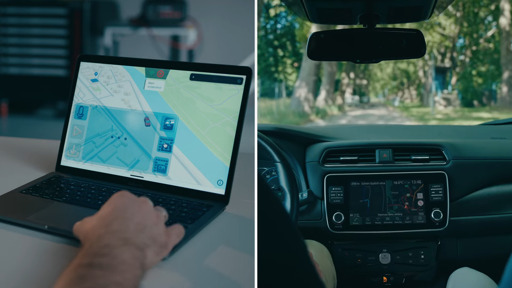Solar + Battery (covering 97% of demand) is now cheaper than coal and nuclear
-
I would have loved that but having a wind turbine is… not easy. Permits, psychotic attitude from neighbours… but that have been my go-to given we don’t have a stream to go hydro.
I’m still happy with covering 8 ou of 12 months with our setup but it’s still unnerving to swallow the costs of the setup + utilities for winter months…Residential wind for electricity generation is not really recommendable afaik, but it could be viable for some amount of heat generation, potentially: https://solar.lowtechmagazine.com/2019/02/heat-your-house-with-a-mechanical-windmill/
-
Some key insights from the article:





Basically, what they did was to look at how much batteries would be needed in a given area to provide constant power supply at least 97% of the time, and the calculate the costs of that solar+battery setup compared to coal and nuclear.
As others have said this is for Las Vegas which receives wayyy more sun than the average place. But the other misleading part is they looked at 20 years which is close to the life cycle for solar/batteries and not even half the life of nuclear
-
As others have said this is for Las Vegas which receives wayyy more sun than the average place. But the other misleading part is they looked at 20 years which is close to the life cycle for solar/batteries and not even half the life of nuclear
Fair point but nuclear will probably always have the disadvantage of initial cost and time to market. It's a huge risk for investors and public officials.
-
From historical data, you can calculate the maximum lull where neither are providing enough.
The difficulty there is that there are a lot of places where you frequently get multiple weeks of both solar and wind at <10% capacity (google for dunkelflaute) that would need an implausible amount of storage to cover.
The OP article is already talking about 5x overbuilding solar with 17h of storage to get to 97% in the most favourable conditions possible. I dont see how you can get to an acceptably stable grif in most places without dispatchable power.
It's not that bad. This is an actual technique in use, and it drastically decreases how much storage you need.
The biggest problem has been convincing capitalism to do it. They've been building solar like nuts because that's the cheapest per MW of anything on simple Excel spreadsheets. More mathematical nuance would show that if everyone does this, it's just going to cause overproduction and wasted potential on very sunny days. You need all three, and toss in some hydro and geothermal, as well.
-
As others have said this is for Las Vegas which receives wayyy more sun than the average place. But the other misleading part is they looked at 20 years which is close to the life cycle for solar/batteries and not even half the life of nuclear
From the dot graph, it implies that las Vegas is one of the worse options? And Birmingham is somehow best?
Not sure I'm reading that right?
-
62 percent could be 7 months all the time and 5 never right? So if those 4 months only get you 20% but the others give you ninety something. When I see that 62 I see it as over half the year it will work out good.
Yeah but that would not account for the electricity need: in winter we need between 1000/1300 kWh mainly for heating / domestic hot water. Other months under 250 even if we use air conditioning. So if you cover the 7 nice months you still get absolutely wrecked by the dreaded 4 in the winter cost wise…
-
Fair point but nuclear will probably always have the disadvantage of initial cost and time to market. It's a huge risk for investors and public officials.
That is the main criticism of nuclear, it should hopefully get better with Westinghouse’s AP1000 receiving full approval and being built all across China so as long as we continue to use the same design it can start to be mass produced instead of making all the parts as one offs that are much more expensive and time consuming
-
Exactly that. My worst case winter month (not even by day and I like to be warm every day) is generating less than 25% of consumption. Not that other winter months are much better.
I feel you… I got a nice 3k€ to pay for electricity just for winter months and that’s with a quite performant heat pump.
But at least zero emissions here… -
From the dot graph, it implies that las Vegas is one of the worse options? And Birmingham is somehow best?
Not sure I'm reading that right?
My understanding of that graph is how do you flatten peak energy demands, Birmingham is flat and throughout the year because you have some parts of the year where you need very little battery capacity and other parts where you need a lot. Las Vegas basically always needs a lot because of how hot it gets they end up with huge amounts of peak energy usage
-
I wanted to make a joke about plug flow electricity because your in the UK I believe from what you said, but I don't know enough about it. Doesn't sound like it could supplement much energy in its current stages. I am curious to see if it ever makes any substantial amount in the next 10 years. (Right now it's so early they are talking only about a few LEDs sort of electricity)
If you haven't heard of it, it is a process of maximizing the use of air pockets created in catching falling water (rain) and allowing it to split in a way that can convert the kinetic energy of it essentially to about 10% electrical energy. Supposedily about 5x as effective as just letting the water fall on its own and turning it to mechanical energy. There's something about it that seems whimsical about it to me. Not sure why.
Using rain for electricity sounds like too fun to be efficient enough xD I’m gonna look into that

-
I feel you… I got a nice 3k€ to pay for electricity just for winter months and that’s with a quite performant heat pump.
But at least zero emissions here…I've got solar with net metering. But apparently I leave in a much gentler environment still, compared to you. Got a small house (<150sqm), winters reach -20°C and have sustained -10°C for multiple weeks and yet the bill hasn't reached past 1400€/mo before solar panels. Everything in the house is runs on electricity.
-
I've got solar with net metering. But apparently I leave in a much gentler environment still, compared to you. Got a small house (<150sqm), winters reach -20°C and have sustained -10°C for multiple weeks and yet the bill hasn't reached past 1400€/mo before solar panels. Everything in the house is runs on electricity.
With 2 electric cars… Belgium here so it’s not the tundra either but the house is sizeable and doesn’t share walls. Hot water alone was 150/200 kWh a month. It all adds…
-
With 2 electric cars… Belgium here so it’s not the tundra either but the house is sizeable and doesn’t share walls. Hot water alone was 150/200 kWh a month. It all adds…
Still a lot. I have to say my cost was before the "recent" hikes. Though my house doesn't share walls either.
-
Some key insights from the article:





Basically, what they did was to look at how much batteries would be needed in a given area to provide constant power supply at least 97% of the time, and the calculate the costs of that solar+battery setup compared to coal and nuclear.
uninterrupted every hour of every day
-
97% sounds impressive, but thats equivalent to almost an hour of blackout every day. Developed societies demand +99.99% availability from their grids.
i’m sure you can squeeze out a measly 3% from wind and hydro, no?
-
This is still more polluting to mine than going nuclear, even accounting for nuclear waste.
Why compare it to nuclear rather than what's currently being used in that area? Coal and gas.
Nuclear is good for providing a stable base load, but having the entire grid be nuclear would be very expensive. And if everyone were to do the same, the market cost of fissile fuel materials would skyrocket.
Lots of solar and wind in the energy mix is a no-brainer.
-
uninterrupted every hour of every day
Works 97% of the time, every time!
-
As others have said this is for Las Vegas which receives wayyy more sun than the average place. But the other misleading part is they looked at 20 years which is close to the life cycle for solar/batteries and not even half the life of nuclear
But the other misleading part is they looked at 20 years which is close to the life cycle for solar/batteries and not even half the life of nuclear
I think Lazard's LCOE methodology looks at the entire life cycle of the power plant, specific to that power plant. So they amortize solar startup/decommissioning costs across the 20 year life cycle of solar, but when calculating LCOE for nuclear, they spread the costs across the 80 year life cycle of a nuclear plant.
Nuclear is just really, really expensive. Even if plants required no operating costs, the up front costs are so high that it represents a significant portion of the overall operating costs for any given year.
The Vogtle debacle in Georgia cost $35 billion to add
2 MW2GW (edit to fix error) of capacity. They're now projecting that over the entire 75 year lifespan the cost of the electricity will come out to be about $0.17 to $0.18 per kilowatt hour. -
That is the main criticism of nuclear, it should hopefully get better with Westinghouse’s AP1000 receiving full approval and being built all across China so as long as we continue to use the same design it can start to be mass produced instead of making all the parts as one offs that are much more expensive and time consuming
Vogtle added 2 AP1000 reactors for $35 billion. Future deployments might be cheaper, but there's a long way to go before it can compete with pretty much any other type of power generation.
-
Using rain for electricity sounds like too fun to be efficient enough xD I’m gonna look into that

Yeah I think I like it because it doesn't sound practical haha. It's like what childhood me would want.
-
-
-
-
Mom sues porn sites (Including Chaturbate, Jerkmate, Superporn and Hentaicity) for noncompliance with Kansas age assurance law; Teen can no longer enjoy life after mom caught him visiting Chaturbate
Technology 1
1
-
-
Tesla confirms it has given up on its Cybertruck range extender to achieve promised range
Technology 1
1
-
-




